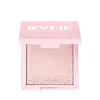What's inside
What's inside
 Key Ingredients
Key Ingredients

 Benefits
Benefits

No benefits
 Concerns
Concerns

 Ingredients Side-by-side
Ingredients Side-by-side

Mica
Cosmetic ColorantSilica
AbrasivePhenyl Trimethicone
Skin ConditioningSorbitan Isostearate
EmulsifyingPolyglyceryl-4 Caprate
EmulsifyingPEG-12 Dimethicone
Skin ConditioningPolyglyceryl-3 Polyricinoleate
EmulsifyingGlycerin
HumectantPolysorbate 20
EmulsifyingHydrogenated Lecithin
EmulsifyingCaprylyl Glycol
EmollientEthylhexylglycerin
Skin ConditioningPolyglyceryl-3 Diisostearate
EmulsifyingGellan Gum
1,2-Hexanediol
Skin ConditioningCalcium Chloride
AstringentDicalcium Phosphate
AbrasiveCI 77891
Cosmetic ColorantIron Oxides
CI 77742
Cosmetic ColorantMica, Silica, Phenyl Trimethicone, Sorbitan Isostearate, Polyglyceryl-4 Caprate, PEG-12 Dimethicone, Polyglyceryl-3 Polyricinoleate, Glycerin, Polysorbate 20, Hydrogenated Lecithin, Caprylyl Glycol, Ethylhexylglycerin, Polyglyceryl-3 Diisostearate, Gellan Gum, 1,2-Hexanediol, Calcium Chloride, Dicalcium Phosphate, CI 77891, Iron Oxides, CI 77742
Synthetic Fluorphlogopite
Silica
AbrasiveIsononyl Isononanoate
EmollientDimethicone
EmollientPolyisobutene
Phenyl Trimethicone
Skin ConditioningMica
Cosmetic ColorantPolymethylsilsesquioxane
Dimethicone Crosspolymer
Emulsion StabilisingHydroxystearic Acid
CleansingMicrocrystalline Wax
Emulsion StabilisingTin Oxide
AbrasivePhenoxyethanol
PreservativeCaprylyl Glycol
EmollientStearic Acid
CleansingCI 77891
Cosmetic ColorantCI 77491
Cosmetic ColorantIngredients Explained
These ingredients are found in both products.
Ingredients higher up in an ingredient list are typically present in a larger amount.
Caprylyl Glycol is a humectant and emollient, meaning it attracts and preserves moisture.
It is a common ingredient in many products, especially those designed to hydrate skin. The primary benefits are retaining moisture, skin softening, and promoting a healthy skin barrier.
Though Caprylyl Glycol is an alcohol derived from fatty acids, it is not the kind that can dry out skin.
This ingredient is also used as a preservative to extend the life of products. It has slight antimicrobial properties.
Learn more about Caprylyl GlycolCi 77891 is a white pigment from Titanium dioxide. It is naturally found in minerals such as rutile and ilmenite.
It's main function is to add a white color to cosmetics. It can also be mixed with other colors to create different shades.
Ci 77891 is commonly found in sunscreens due to its ability to block UV rays.
Learn more about CI 77891Mica is a naturally occurring mineral used to add shimmer and color in cosmetics. It can also help improve the texture of a product or give it an opaque, white/silver color.
Serecite is the name for very fine but ragged grains of mica.
This ingredient is often coated with metal oxides like titanium dioxide. Trace amounts of heavy metals may be found in mica, but these metals are not harmful in our personal products.
Mica has been used since prehistoric times throughout the world. Ancient Egyptian, Indian, Greek, Roman, Aztec, and Chinese civilizations have used mica.
Learn more about MicaPhenyl Trimethicone is a silicon-based polymer. It is derived from silica.
Phenyl Trimethicone is used as an emollient and prevents products from foaming.
As an emollient, it helps trap moisture in the skin. It is considered an occlusive.
Learn more about Phenyl TrimethiconeSilica, also known as silicon dioxide, is a naturally occurring mineral. It is used as a fine, spherical, and porous powder in cosmetics.
Though it has exfoliant properties, the function of silica varies depending on the product.
The unique structure of silica enhances the spreadability and adds smoothness, making it a great texture enhancer.
It is also used as an active carrier, emulsifier, and mattifier due to its ability to absorb excess oil.
In some products, tiny microneedles called spicules are made from silica or hydrolyzed sponge. When you rub them in, they lightly polish away dead skin layers and enhance the penetration of active ingredients.
Learn more about Silica